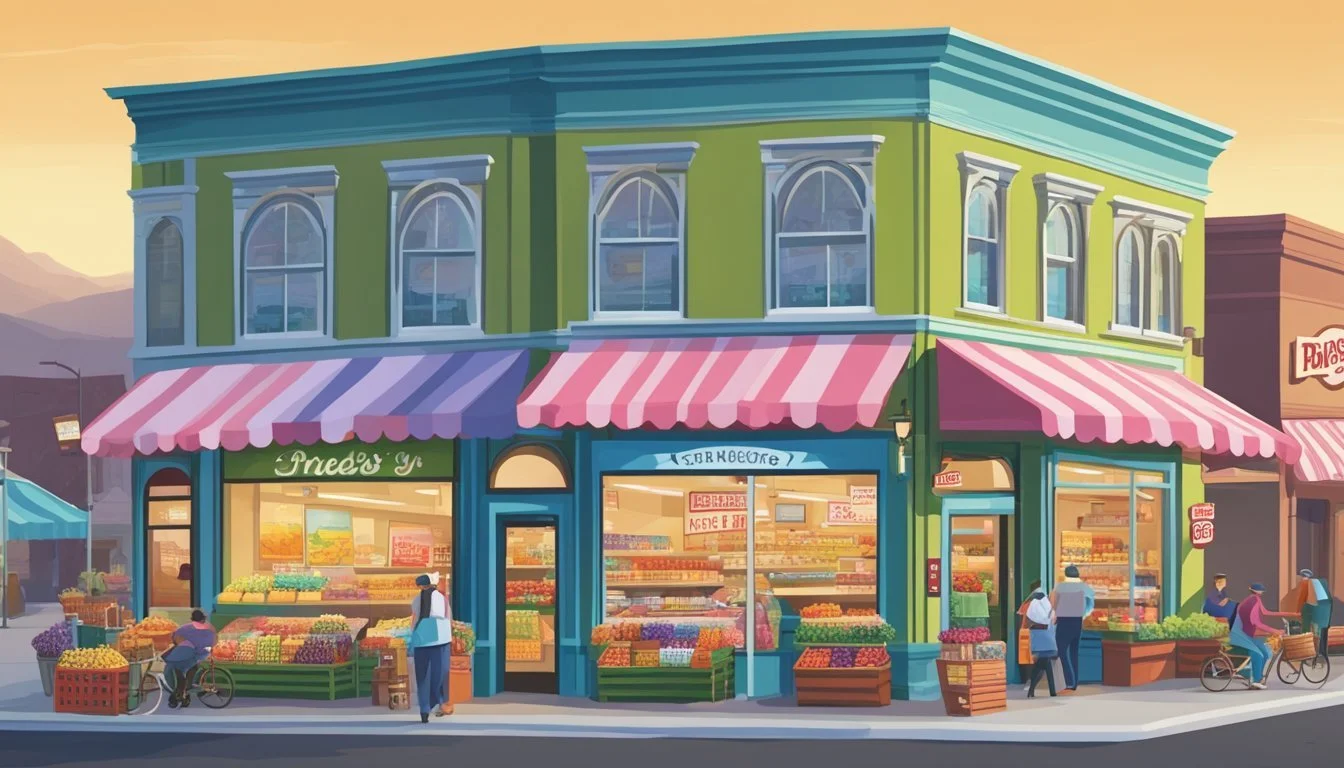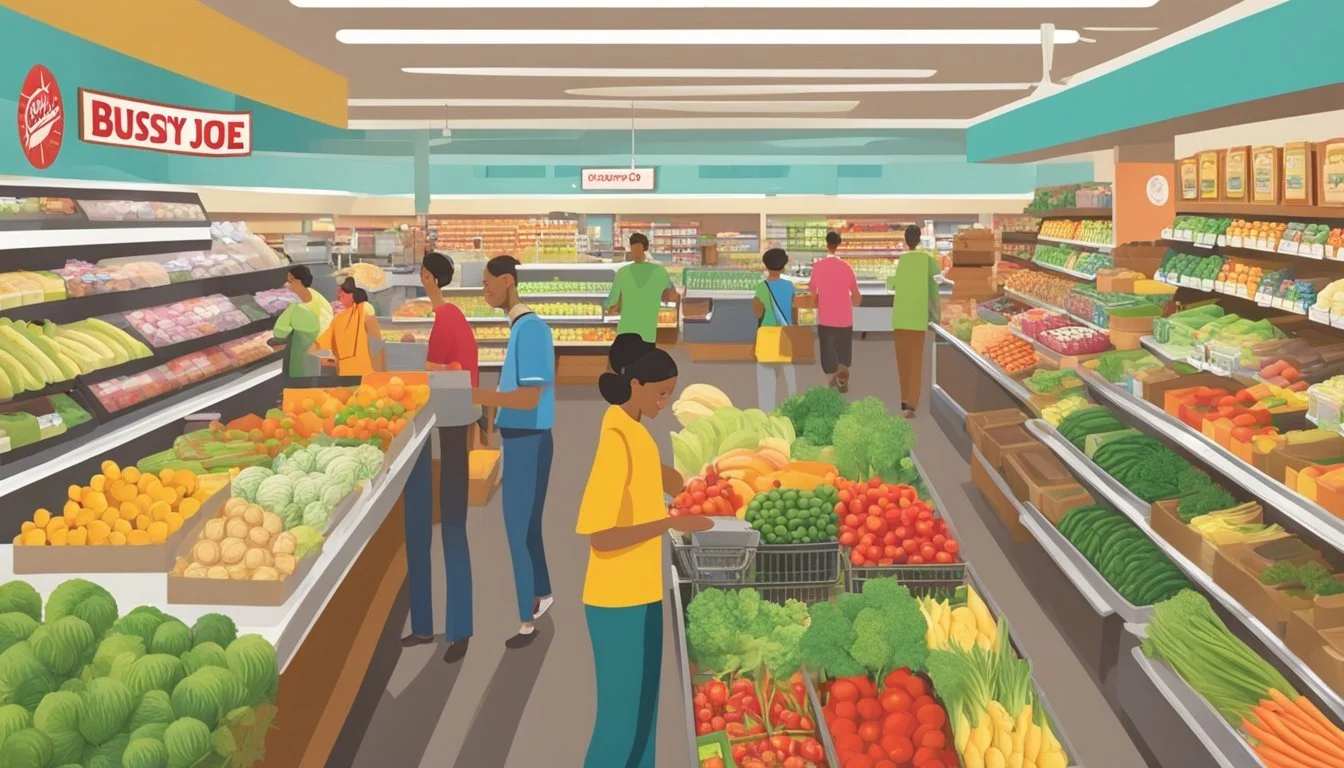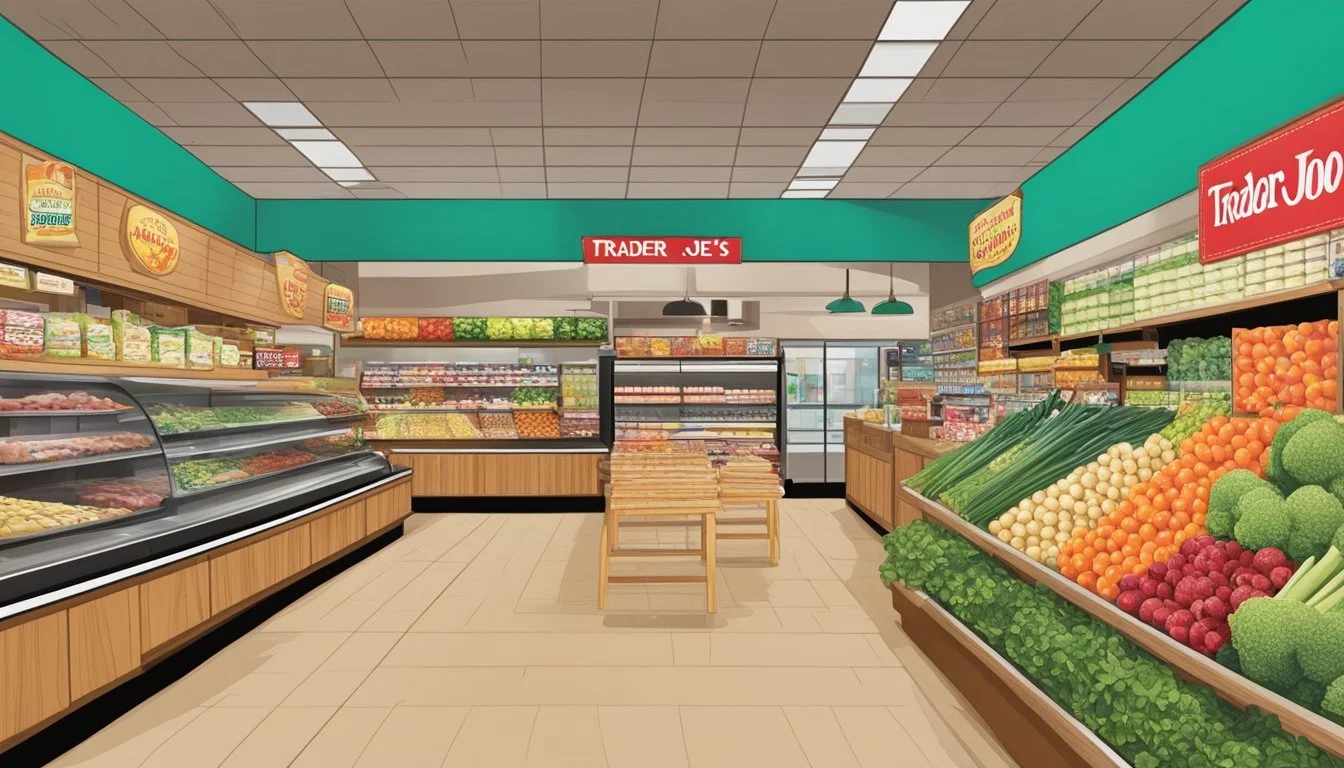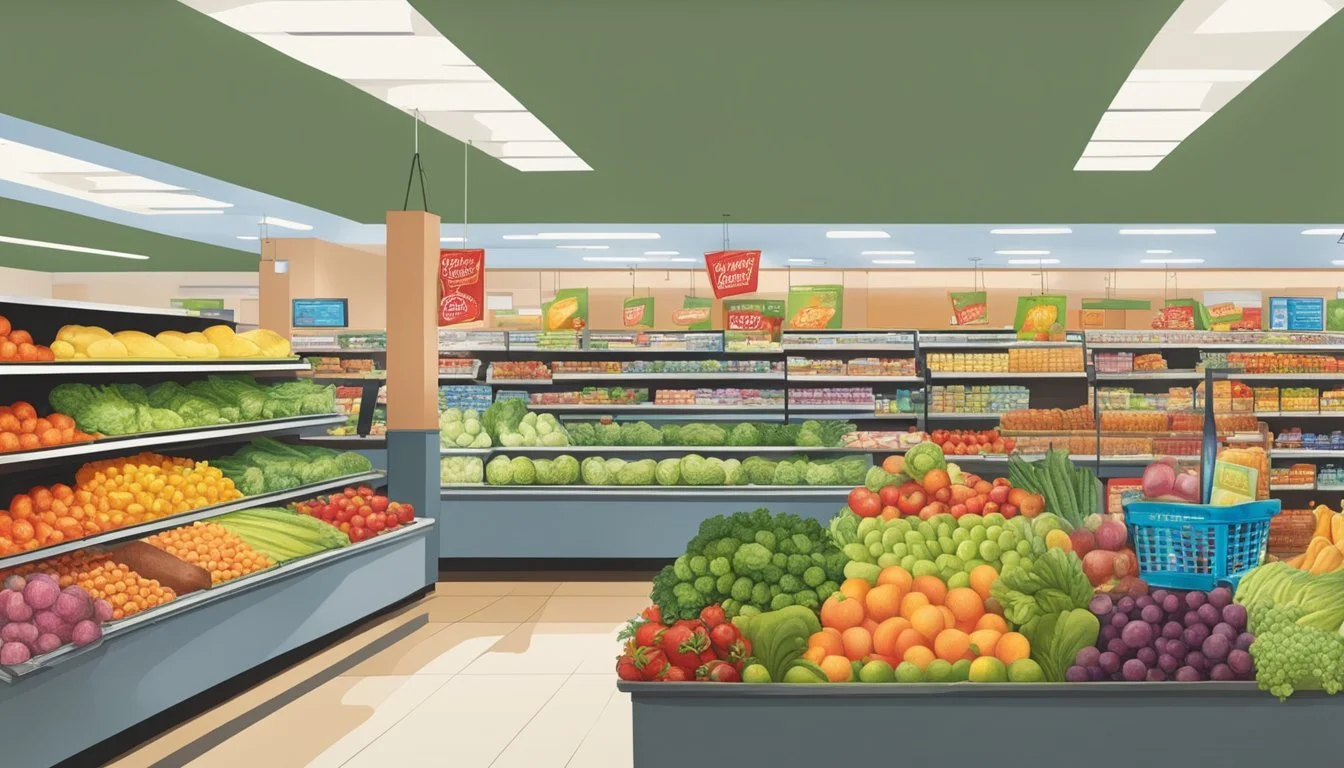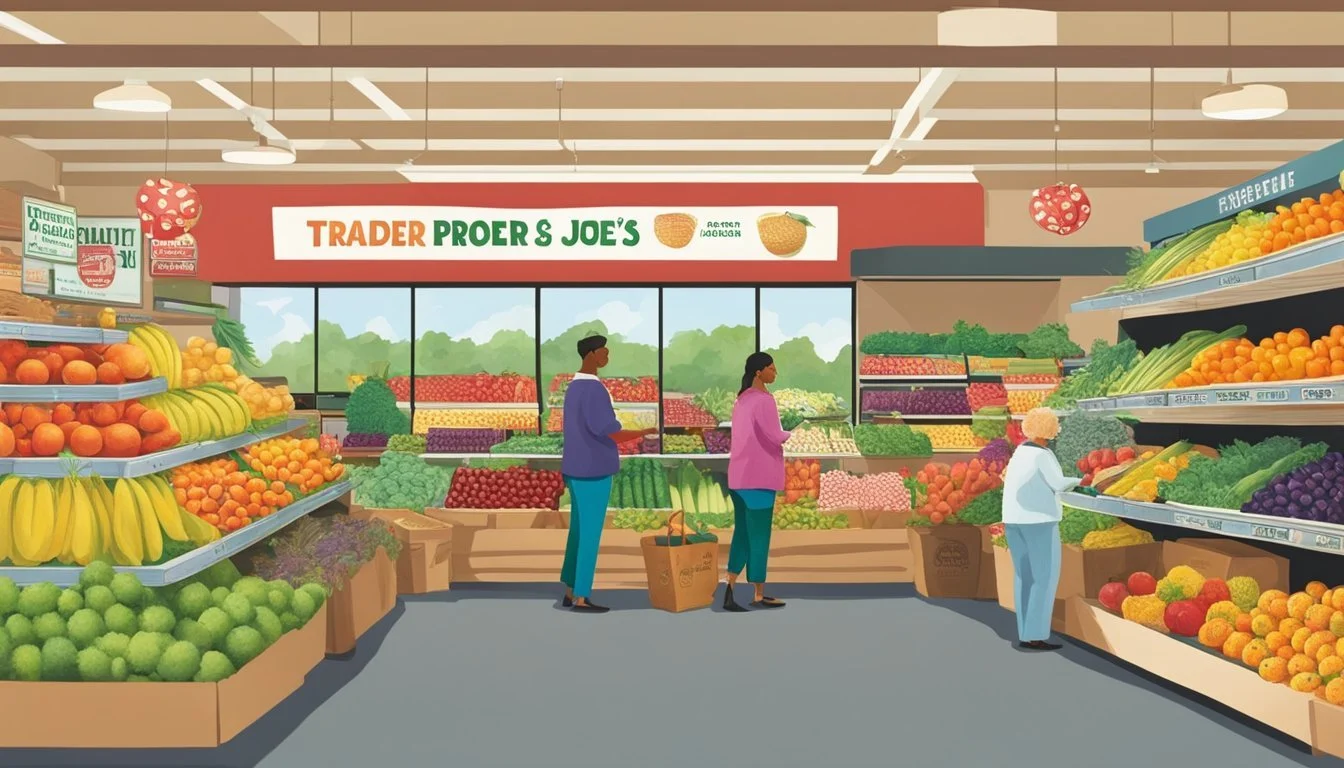Trader Joe's vs Piggly Wiggly
Comparing Shopping Experiences and Value
Part of Our Grocery Store Guide with Details on Trader Joe's and Piggly Wiggly
When comparing grocery stores for quality, variety, and pricing, Trader Joe's and Piggly Wiggly present distinct experiences that cater to different consumer needs. Trader Joe's is often recognized for its competitive prices and private label products that foster a sense of brand loyalty and uniqueness. Known for its affordable fancy cheeses, wines, and various specialty items, Trader Joe's emphasizes a curated selection that often appeals to those searching for a distinct shopping experience in the context of affordability and quality.
On the other hand, Piggly Wiggly, with its deep Southern roots, operates on a different model. As one of the first self-service grocery stores in the United States, Piggly Wiggly allows customers to hand-pick their items, providing a more traditional supermarket experience. The store's focus is on giving a community-based shopping environment where the selection of goods might be broader, including national and regional brands, catering to a demographic that values conventional grocery shopping.
Both Trader Joe's and Piggly Wiggly have carved out their niches in the competitive food market. The former has established a strong identity with its budget-friendly yet unique offerings, while the latter maintains a classic approach, emphasizing local charm and a wide-ranging inventory. Consumers' choice between the two ultimately boils down to individual preference in shopping atmosphere, product assortment, and pricing priorities.
Company Profiles
This section delves into the distinct histories of Trader Joe's and Piggly Wiggly, covering their origins, growth, and the uniqueness they bring to the grocery store market.
Trader Joe's History
Trader Joe's began in 1958 as a small chain of convenience stores called "Pronto Markets." In 1967, Joe Coulombe, the founder, rebranded the stores to "Trader Joe's" and introduced a nautical theme to the newly named stores. The first official Trader Joe's store opened in Pasadena, California, adopting a South Seas motif that stood out in the grocery store industry. They specialized in Trader Joe's brand products, which have often been praised for their quality and value, enhancing their reputation over time. Today, Trader Joe's maintains its unique branding with a focus on innovative, hard-to-find groceries that cater to adventurous shoppers and health-conscious consumers.
Piggly Wiggly History
Piggly Wiggly claims the distinction of being the first self-service grocery store, opening its doors in 1916 in Memphis, Tennessee under the leadership of founder Clarence Saunders. The store revolutionized the retail grocery market with its never-before-seen shopping model, allowing customers to wander the aisles and pick out their own groceries rather than having items fetched by clerks. Piggly Wiggly's early innovation set the standard for modern grocery stores. It's currently made up of mainly independently-owned and operated stores, reinforcing strong community ties particularly in the Southeastern and Midwestern United States. While not as expansive as some competitors, Piggly Wiggly enjoys regional loyalty and provides a down-to-earth shopping experience.
Store Layout and Design
The physical layout and interior design of a grocery store can significantly impact a customer's shopping experience. Attention to store ambiance, organization, and theme contributes to the overall perception and efficiency of shopping.
Trader Joe's Store Ambiance
Trader Joe's stores typically encompass about 15,000 sq ft, a more intimate space compared to average grocery stores. This compact size contributes to a unique store ambiance that is enriched with a nautical theme, reflecting the brand's quirky and adventurous spirit. Store Design is pivotal at Trader Joe's; aisles are spacious despite the smaller footprint, and there's a conscious effort to feature eco-friendly policies, such as reduced packaging and renewable energy sources.
Features of Trader Joe's Store Design:
Compact Space: Optimizes square footage for an easier and quicker shopping experience.
Nautical Theme: Reinforces brand identity and creates a distinctive shopping environment.
Eco-Friendly: Prioritizes sustainable practices, like offering reusable bags and minimizing waste.
Piggly Wiggly Store Organization
Piggly Wiggly, recognized as the first self-service grocery store, has a storied history with store organization being a key aspect of its customer experience. The layout of Piggly Wiggly stores is generally straightforward, allowing for a self-directed shopping experience. They are designed with clear signage and logical product placement that guides the customer through the store efficiently.
Piggly Wiggly's Organizational Highlights:
Clear Signage: Easy navigation through the store sections.
Logical Layout: Strategic placement of goods that follows a sensible shopping journey.
Product Assortment and Brands
In analyzing the product assortment and brands, it is essential to consider the exclusive brands, the balance of name brands versus store brands, and the availability of specialty and organic offerings. Furthermore, the development of in-house products plays a crucial role in differentiating each store's unique shopping experience.
Exclusive Brands Overview
Trader Joe's prides itself on its array of exclusive brands that customers have come to recognize and love. The Trader Joe's brand covers a wide variety of products, encompassing everything from pantry staples to frozen foods. In contrast, Piggly Wiggly offers a selection of store brands that cater to budget-conscious shoppers, though it may not match the cult following of Trader Joe's branded items.
Name Brands vs. Store Brands
While Trader Joe's predominantly stocks its branded products, Piggly Wiggly provides a mix of both name-brand products and store brands. Piggly Wiggly's approach gives customers access to familiar national brands alongside more affordable store-brand alternatives, offering versatility in choice and price points.
Specialty Products and Organic Offerings
Trader Joe's is known for its unique specialty products, such as the Organic Trofie Pasta, and a notable selection of organic and non-GMO offerings that align with current consumer trends. Piggly Wiggly also carries a range of organic products, though its focus may not be as pronounced as Trader Joe's in this category.
In-House Products and Development
In-house product development is a hallmark of Trader Joe's, where many products are formulated to enhance flavor profiles and cater to health trends. This strategy has led to a lineup of interesting and globally-inspired items that are often exclusive to its stores, an aspect that Piggly Wiggly's more traditional approach may not fully emulate.
Food Quality and Selection
Evaluating food quality and selection between Trader Joe's and Piggly Wiggly involves a detailed comparison of their produce, meat and poultry, dairy and bakery, and the range of healthier options they offer.
Produce Section Comparison
Trader Joe's produce section typically offers a variety of fresh fruits and vegetables that cater to both conventional and organic consumers. The quality of their produce is often noted for consistency and the store lays out its vegetables and fruits in an appealing and accessible manner. Piggly Wiggly, while having a more traditional approach, provides a wide range of local produce which shoppers appreciate for its freshness and regional flavor.
Trader Joe's: Consistently fresh, wide organic selection.
Piggly Wiggly: Emphasis on local produce, seasonal freshness.
Meat and Poultry Standards
Trader Joe's meat and poultry section is known for providing hormone-free and antibiotic-free options. They are praised for offering a selection of higher-quality meats, including grass-fed and organic choices. Piggly Wiggly may offer a more limited range in comparison, but they are recognized for their traditional butcher service, offering specific cuts and customer service that adds a personalized touch to shopping for meat.
Trader Joe's: Hormone-free, antibiotic-free, specialty meats available.
Piggly Wiggly: Traditional butcher services, personal customer care.
Dairy and Bakery Offerings
In the dairy aisle, Trader Joe's presents an array of cheeses, including artisan and imported varieties. Their milk and eggs are competitively priced and often come from cage-free or free-range sources. The bakery section is full of diverse bread options, including gluten-free choices. Piggly Wiggly's dairy offerings are substantial, with a focus on regional dairy products. Their bakery section offers a selection of traditional bread and pastries, with a homestyle feel that resonates with their customer base.
Trader Joe's: Artisan cheeses, cage-free eggs, diverse bakery including gluten-free.
Piggly Wiggly: Regional dairy focus, traditional breads and pastries.
Healthier Options and Dietary Products
Trader Joe's excels in providing a variety of healthier options, including a wide range of dietary products such as gluten-free and veggie sticks. Their labeling makes it easier for customers to identify these health-conscious choices. Piggly Wiggly also includes healthier options, but with a selection that may not be as extensive as Trader Joe's. They tend to stock practical, everyday healthy items rather than niche dietary products.
Trader Joe's: Extensive dietary products, clear labeling for healthier options.
Piggly Wiggly: Everyday healthy items, more traditional assortment.
Pricing and Value for Money
When considering the grocery shopping experience, two critical factors for consumers are the pricing and the value for money. Both Trader Joe's and Piggly Wiggly offer unique approaches to providing savings, but they differ significantly in their pricing structures, discounts, and how they stack up against competitors.
Everyday Low Prices
Trader Joe's is renowned for its competitive pricing, particularly with its house brand products. Consumers find value in Trader Joe's offerings - with an average basket of 48 staple items often costing around 33% less than a similar basket at a traditional supermarket. In contrast, Piggly Wiggly touts a reputation for affordability, with prices that tend to be lower than those found at Walmart.
Aldi is known for its remarkably low prices, typically still lower than Trader Joe's and Piggly Wiggly, due to its cost-saving business model.
Walmart, a major player in the low-price market, has seen some price drops but also fluctuations that can affect its budget-friendly image.
Discounts and Savings Programs
Piggly Wiggly's reputation for savings extends to its discounts and loyalty programs, offering shoppers various deals. Customers can take advantage of weekly ad specials and loyalty card discounts that provide significant savings over time. Trader Joe's, however, does not offer traditional sales or loyalty programs but maintains low prices consistently.
Winn-Dixie and SE Grocers offer their own savings programs, with products often 20% cheaper than national brands.
Whole Foods Market, associated with higher costs, has sought to provide value through its affiliation with Amazon, offering special discounts to Prime members.
Comparison with Competitor Pricing
In a head-to-head comparison, Trader Joe's pricing strategy edges out several competitors, including Piggly Wiggly, especially when comparing store brand to store brand. Customers shopping at Trader Joe's can save money without sacrificing quality. Similarly, Piggly Wiggly offers lower prices than Walmart on many products.
Retailer Comparison Point Price Advantage Trader Joe's Store brand staples 33% less expensive than typical supermarkets Piggly Wiggly Popular products Cheaper than Walmart on many items Aldi Overall pricing Often the cheapest option, beating Trader Joe's and Piggly Wiggly Walmart Brand variety More brand options, but with variable pricing
Costco and Kirkland Signature often come into the conversation regarding bulk buying and private labeling, which can provide considerable savings for those shopping for larger households or those who prefer to stock up.
Aldi continues to maintain a lead with the highest percentage of lower prices year over year.
Customer Shopping Experience
When comparing the shopping experience at Trader Joe's and Piggly Wiggly, key differences are evident in store layout, service quality, checkout efficiency, and community relations.
In-Store Experience
Trader Joe's is renowned for its unique store design, maintaining a smaller footprint averaging around 15,000 sq ft. They curate a lineup of exciting and diverse products, many of which are packaged under their own brand, offering a selection that often includes healthy options and high-quality grocery items. Customers typically find a welcoming atmosphere with aisles of affordable and packaged foods that are easy to navigate. Piggly Wiggly, with its conventional setup, emphasizes variety and local preferences, offering a more traditional shopping experience.
Customer Service Quality
Trader Joe's staff are known for creating a friendly and helpful environment. They engage with shoppers by offering free samples and readily providing assistance. This level of customer service leads to a shopping experience that feels personal and attentive. In contrast, Piggly Wiggly's customer service varies by location but generally embodies the motto of being "The Friendliest Store in Town," aiming to ensure customer satisfaction with a neighborhood store charm.
Checkout Efficiency
Trader Joe's stores prioritize a fast and efficient checkout process, despite potentially long lines, which they manage effectively. Employees are trained to be quick and accurate, making the checkout experience as smooth as possible. Piggly Wiggly also places a significant emphasis on checkout efficiency, with a layout and staff approach designed to minimize wait times. Both stores aim to respect the shopper's time, reinforcing positive customer experiences.
Community Involvement
Trader Joe's contributes to the communities it serves by donating unsold but still viable products to food banks and participating in local events. Piggly Wiggly establishes its community ties by supporting local suppliers and often becomes a centerpiece in the communities it operates within. Both grocery chains understand the importance of community engagement as a part of the overall shopping experience.
Additional Services and Departments
Trader Joe's and Piggly Wiggly both offer an array of services and departments that cater to their customers' needs beyond the standard grocery aisles. These value-added options can significantly enhance the shopping experience.
Financial and Pharmacy Services
Trader Joe's typically does not include pharmacy or banking services within their stores. Their focus remains largely on the grocery market, where they offer an eclectic range of products, including a sought-after selection of peanut butter and a well-stocked frozen section.
Piggly Wiggly, in contrast, often provides customers with convenient in-store pharmacy services, allowing them to pick up prescriptions while they shop for their groceries. Some locations may also harbor financial service centers, which can include basic banking services for added convenience.
Ready-to-Eat and Coffee Bar
Both stores understand the growing demand for ready-to-eat food and quick meal solutions. Trader Joe's is renowned for its wide array of ready-to-eat options, often featuring global cuisine. They do not, however, typically include a coffee bar within their stores.
Piggly Wiggly varies by location, but some stores offer a selection of ready-to-eat meals and may have a coffee bar where shoppers can enjoy a hot beverage while they shop.
Specialized Departments
When it comes to specialized departments, Trader Joe's shines with its diverse and often unique product offerings. Customers frequent Trader Joe's for their:
Dairy Section: A comprehensive selection that often includes organic and alternative options.
Bulk Items: Trader Joe's carries a limited selection of bulk items, focused on quality and value.
Piggly Wiggly offers a traditional supermarket experience with a complete range of departments. They typically provide:
Dairy Section: Full-fledged dairy offerings, including a wide variety of brands and products.
Bulk Section: Customers can purchase items in bulk, which often leads to savings and less packaging waste.
Each store brings its own strengths to these additional services and departments, catering to a variety of shopper preferences.
Supply Chain and Sustainability
Trader Joe's has established a supply chain that emphasizes sustainability, with efforts to carry eco-friendly product lines. Despite this, it received a low overall sustainability score, partially attributed to plastic packaging usage and other categories. Yet, Trader Joe's shows a commitment to carrying sustainable products with a high score in that particular area.
On the other hand, Piggly Wiggly appears less prominently in conversations about sustainability. There is no readily available information suggesting significant strides in sustainable practices or eco-friendly policies.
Manufacturers and Growers:
Trader Joe's opts for relationships with manufacturers that align with its sustainability values.
Brokers and Distributors:
Details on the respective approaches of Trader Joe's and Piggly Wiggly to brokers and distributors in their supply chains are not explicitly provided, and thus, their practices in this area remain less clear.
Plastic Packaging:
While Trader Joe's has a few waste reduction efforts underway, it still relies substantially on plastic packaging, impacting its sustainability score.
Both retailers could benefit from increased transparency and further development of robust sustainability measures, from the growers they source from to the final product delivery, catering to a growing consumer demand for eco-friendly practices across the supply chain.
Market Presence and Locations
Trader Joe's and Piggly Wiggly are prominent players in the grocery store sector. Trader Joe's operates with a focus on smaller store layouts, averaging 10,000-15,000 square feet, which contrasts with the larger footprints of traditional supermarkets like Kroger, with store sizes often exceeding 51,000 square feet. The chain's presence is significant across metropolitan areas, boasting many locations in densely populated regions such as New York's Manhattan, especially in neighborhoods like the Upper West Side.
Piggly Wiggly, by contrast, takes on a different strategy in the supermarket arena. It holds a piece of American retail history as one of the country's first self-service grocery stores. Piggly Wiggly's locations tend to disperse across smaller towns and communities, reflecting its appeal in suburban and rural markets.
In the competitive landscape, both stores share the turf with heavyweight retailers like Walmart and Target, as well as specialized grocery chains like Whole Foods Market and Sprouts Farmers Market. The niche that Trader Joe's has carved out—with its emphasis on unique, private-label products—sets it apart from Piggly Wiggly and alike traditional supermarkets, including Giant, Food Lion, Stop & Shop, and Publix.
While Trader Joe's does not compete on sheer size and widespread geographical coverage as some of its peers, such as Kroger, Safeway, and Albertsons, it establishes a strong market presence through strategic location choices and a distinctive store experience. Piggly Wiggly's footprint may not encompass cosmopolitan hubs to the extent of Trader Joe's or align with the upscale market segment of Whole Foods, but it remains a trusted name in numerous communities.

